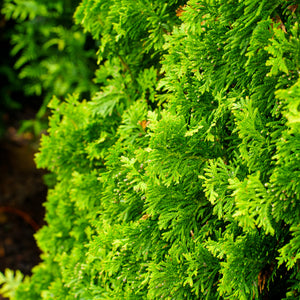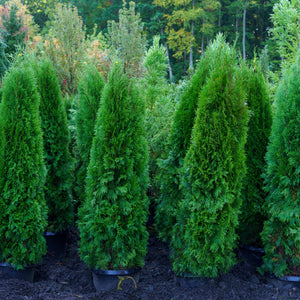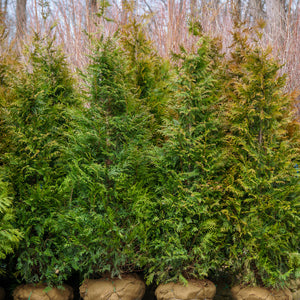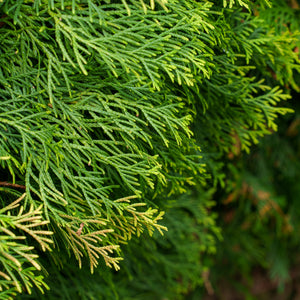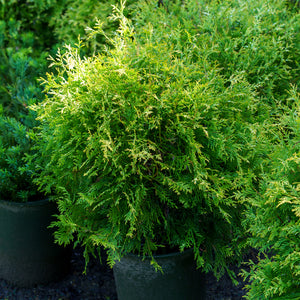The Arborvitae Guide
Arborvitae, a widely used evergreen shrub or tree, belongs to the genus Thuja and is favored for its dense, columnar growth, low maintenance, and year-round color. From privacy screens to foundation plantings, these versatile conifers are essential in both residential and commercial landscapes. Available in a range of sizes and shades, including golden and emerald-green cultivars, arborvitae bring structure, texture, and reliability to a garden design.
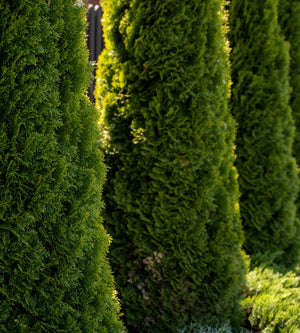
About
Arborvitae are members of the cypress family (Cupressaceae) and include several species commonly found in horticulture: Thuja occidentalis (Eastern Arborvitae), Thuja plicata (Western Red Cedar), and hybrids like Thuja standishii x plicata 'Green Giant'. These evergreen conifers are native to North America and Asia, prized for their scale-like foliage and symmetrical, upright habits.
Popular cultivars include:
- Thuja occidentalis 'Smaragd' (also known as Emerald Green Arborvitae), valued for its tight pyramidal shape and vibrant green foliage.
- Thuja plicata x standishii 'Green Giant', one of the fastest-growing and most commonly planted privacy hedges in the U.S.
- Thuja occidentalis 'Hetz Midget', a dwarf globe variety ideal for small gardens or low borders.
- Thuja occidentalis 'Janed Gold' and 'Yellow Ribbon' add golden accents to mixed evergreen compositions.
- Columnar selections like 'Degroot’s Spire', 'Nigra', and 'Zmatlik' offer vertical interest and screening capabilities.
With options ranging from miniature globes to towering hedgerow trees, arborvitae provide year-round structure and are typically resistant to harsh climates and urban conditions.
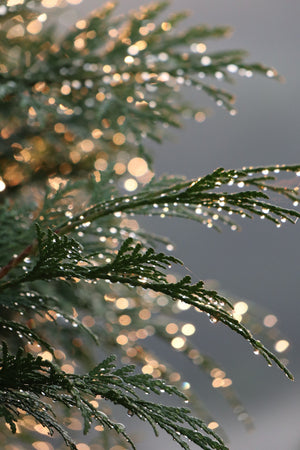
PLANTING
Most Thuja occidentalis varieties are hardy in Zones 3–7, while Thuja plicata types tolerate Zones 5–8.
Soil: Arborvitae prefer moist, well-drained soil but are tolerant of a range of soil types, including loamy and sandy soils.
Sunlight: Full sun to partial shade. They perform best in full sun, where growth is denser and foliage remains vibrant.
Spacing: Space according to variety. For privacy hedges, 'Green Giant' should be spaced 5–7 feet apart, while 'Smaragd' should be spaced 2–3 feet apart.
Planting Time: Spring and early fall are best for root establishment. Avoid planting in the peak of summer heat.
To plant, dig a hole twice the width of the root ball and no deeper than the height of the root system. Backfill with a mix of native soil and compost, water thoroughly, and apply mulch around the base, avoiding direct contact with the trunk.
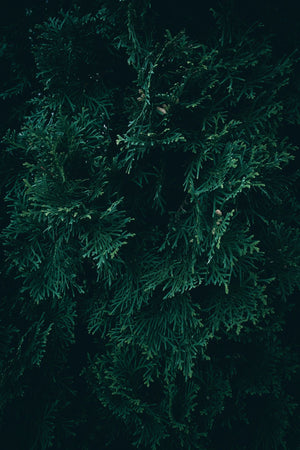
CARE
Arborvitae are relatively low maintenance once established, though young plants require attentive care during their first few years.
- Watering: Water regularly during the first growing season. Deep watering once a week is ideal. Mature plants are moderately drought tolerant.
- Fertilizing: Apply a balanced, slow-release fertilizer in early spring to promote healthy growth.
- Mulching: Maintain a 2–3 inch mulch layer around the base to retain soil moisture and regulate temperature.
- Pruning: Minimal pruning is needed, but light shearing in late spring or early summer helps maintain desired shape. Avoid cutting into old wood, as arborvitae don’t regenerate from brown stems.
- Winter Protection: In cold climates, consider wrapping young or narrow cultivars like 'Brandon' or 'Degroot’s Spire' with burlap to prevent wind burn or snow damage.
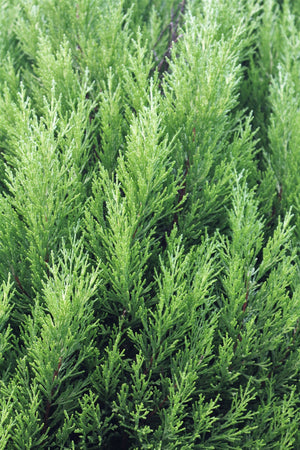
HOW TO USE
Arborvitae’s versatility allows them to be used in a wide variety of landscape settings:
- Privacy Screens & Hedges: Use fast-growing varieties like 'Green Giant' or 'Steeplechase' to create dense, year-round privacy barriers.
- Foundation Plantings: Compact forms such as 'Little Giant' or 'Hetz Midget' are excellent for anchoring home landscapes without overwhelming nearby plantings.
- Formal Gardens: Columnar forms like 'Smaragd' are ideal for clipped hedges, entryway flanking, or geometric layouts.
- Mixed Evergreen Borders: Golden cultivars like 'Golden Tuffet' or 'Janed Gold' offer color contrast when mixed with blue spruce or red-tinted hemlock.
- Specimen Plantings: Unique selections such as Thuja orientalis ‘Morgan’ or Thuja occidentalis 'Fairy Lights' add focal point appeal with distinct texture and hue.
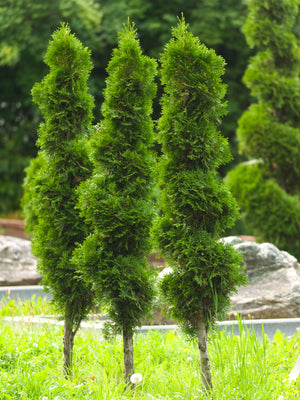
Common Questions
- How fast do arborvitae grow? Growth rates vary by variety. Green Giant can grow up to 3 feet per year, while Smaragd grows about 6–12 inches annually.
- Do deer eat arborvitae? Yes, deer often browse arborvitae, especially in winter. Protect young plants with fencing or repellents.
- How fast do Emerald Green arborvitae grow? Typically grows 6–12 inches per year under optimal conditions.
- How to plant arborvitae? Plant in well-drained soil with ample space for mature width. Water thoroughly and mulch after planting.
- How to trim arborvitae? Trim in late spring or early summer, avoiding cuts into old, woody stems. Light shearing maintains shape.
- When to plant arborvitae? Early spring or fall is best, when temperatures are mild and moisture is consistent.
- How fast do Green Giant arborvitae grow? Green Giant is one of the fastest growers, with 2–3 feet of annual growth.
- Can arborvitae grow in shade? Arborvitae prefers full sun but tolerates partial shade. Too much shade may cause thinning and legginess.
Conclusion
Arborvitae are reliable, evergreen workhorses of the landscape, providing structure, privacy, and year-round beauty with minimal upkeep. Whether you're creating a formal entry, screening an unsightly view, or adding depth to a mixed border, there’s an arborvitae variety to suit your needs. With proper planting and care, these hardy conifers offer decades of service and timeless appeal.
The Arborvitae Collection
Sold Out

